Alison Winterroth Keeps Newborn Portraits Simple
A well-defined workflow that highlights the customer experience is one way infant photographer Alison Winterroth guarantees her success.
• May 2020 issue
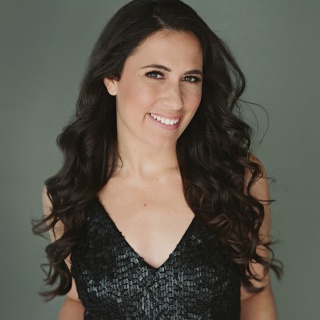
Photographer Alison Winterroth
Sometimes you dream of being a photographer your whole life. Sometimes you back into it. The latter was the case for Alison Winterroth, who fell in love with photography while making product shots of the jewelry she sold on Etsy. Jewelry making fell by the wayside when her children were born, she says. But photography became an obsession. After perfecting her craft by photographing her own kids, she opened a studio in Tampa, Florida, finding quick success thanks to a clean, modern style that stood out in her market paired with a strong business sense gleaned from her entrepreneurial family.
“Right off the bat it was, I had to have this career to feed my family,” she says. “It wasn’t like, this is our vacation money, or this is something I’m doing on the side. Pretty much from the very beginning I was very professional about it.” No free sessions. Costs calculated and prices set exactly where they needed to be to support a thriving business. Winterroth likes to photograph newborns in a studio setting, where she can control the light and the look, thereby establishing a uniform style that’s all her own.
Winterroth walks us through her customer experience from start to finish.
Put prices on your website. The customer experience begins with a photographer’s website, and including prices sets the scene for transparency. There’s certainly no need to keep prices a secret until a consultation. Because she posts her starting price points online, by the time Winterroth has a potential client on the phone, they’ve basically pre-qualified themselves, she says.

Get the client on the phone. The best medium for Winterroth to communicate her style and describe her sessions is the phone. So when a potential client reaches out to Winterroth through her website or by email, her immediate goal is to initiate a call. “We can go back and forth by email 50 times, and they are still asking questions and they still may not understand,” she says. If she can reach them on the phone, it’s more personal, they feel less like a number, and she can very clearly lay out what she offers and describe her particular style of infant photography. “I can do a 15-minute conversation and they know exactly what to expect.”
Be clear about your style. During that phone conversation, Winterroth begins by explaining her approach and style with newborns, noting that her goal is to capture them exactly as they are, asleep or awake. While she does some gentle posing of the subject, she does not create the heavily styled, posed images of newborns that clients sometimes expect, she explains, so it’s important that’s made clear from the outset. If a client would like a more posed session, she recommends other photographers in her area who offer that style. “I am striving to capture the faces that they make organically because those are things that in 20 years they are going to care about—not about the bow in their hair,” she says.
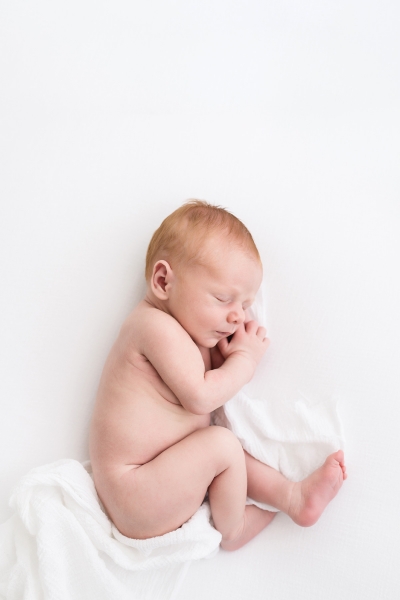
No need to be pushy. Once she’s had that initial conversation, she emails pricing information, asking the client to reach out with any questions. If they indicate they’re comfortable with the pricing, she sends over the booking information. “It’s as low-pressure as possible,” she says. “I don’t want anyone to feel like they went over budget.”
Make a plan for their arrival. Winterroth tries to keep her sessions under two hours and has found that they run smoother and faster when the infant is asleep upon arrival. With that goal in mind, she has three asks for clients: One, dress the infant in an outfit that buttons or zips so there’s no need to bring the clothing over the infant’s head when she undresses them at the beginning of the session, which risks waking the baby. Two, feed the baby just before they leave the house, which puts the newborn into a deep sleep during the car ride. Three, don’t allow the baby to take an extended nap before the session, which is one more way to ensure the infant is good and sleepy upon arrival at the studio.
Be careful not to wake the newborn. Winterroth prefers to get the car seat out of the vehicle herself since she’s mastered the art of don’t-wake-the-baby. “Sometimes the moms will ask the dad to do it and the baby will bump their head on the seatbelt,” she says. Before she takes the baby out of the car seat in the studio, though, she gives clients a quick tour so they know where to find the clothing, restroom, and sibling play area. Once she has the sleeping baby in her arms, she can begin making photographs immediately.
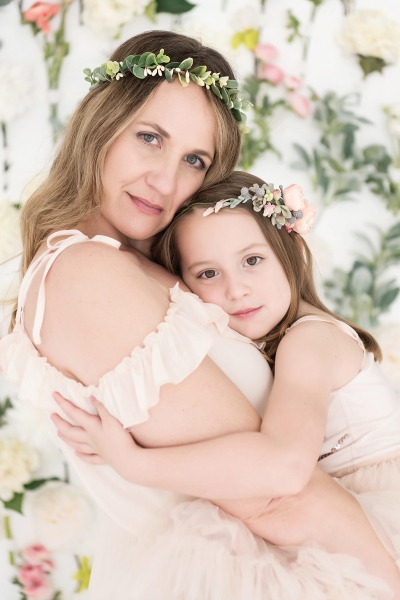
Keep the studio warm. For the infant’s comfort and health, Winterroth keeps her session area at a balmy 80-86 degrees Fahrenheit. “I call it getting-naked temperature,” she says. For many of the photos, the baby wears just a diaper, so a warm environment is important. The play and sitting area of the studio are kept at a cooler temperature for the adults and siblings.
Control the light. Winterroth used to rely on window light but found Florida’s weather too changeable, making it necessary to readjust her white balance often. She moved to a simple go-to lighting setup that complements her white-on-white style. She uses a Paul C. Buff 86-inch white umbrella. “It’s basically like a big window,” she says, which she positions to the right of the newborn at a 45-degree angle, aiming down from head to toes. “There is not a ton of dimension in the light—just the way I like it, a little bit of shadow but not much. I like a soft, flat light.”

Move through a series of planned shots. Time is of the essence once Winterroth has a sleeping newborn in the studio. She gently removes their clothing, being careful not to wake them. “I always start them with a white blanket on my bean bag.”
She promises the client 30 images—typically giving them 40 to 50—and begins with the easy, sleepy shots before moving on. She lightly drapes a swaddle over the newborn’s diaper and moves through a series of angles: full face in the lens, backed up away from the face with more of the blanket in the frame, more negative space, and a profile with the Paul C. Buff as a backlight. Then she moves to a gently posed image where she takes the newborn’s hand and lightly stretches it above their head, backing off if the infant resists. Finally, she switches to a macro lens for captures of the newborn’s lips, eyelashes, fingers, toes, ears, hair, and flaking skin (if they have it).
“My goal is to get at least five different images from every single pose that I do,” she says. That way, if the baby wakes up at any point, she still has plenty of peaceful, sleeping baby images in the bank.
Next, she moves to the gently posed shots: the side C (a full-body photo of the baby curled in the fetal position with a swaddle covering their bottom), and a side-lying shot with their hands tucked under a cheek. By now the baby is often waking up, and Winterroth captures as many stretches and facial expressions as possible. “A lot of that just happens by waiting,” she says. “I just kind of crouch over the baby for a while and wait and see if they are going to stretch or yawn or make a crying face. Whatever face they are making, I am capturing those.”
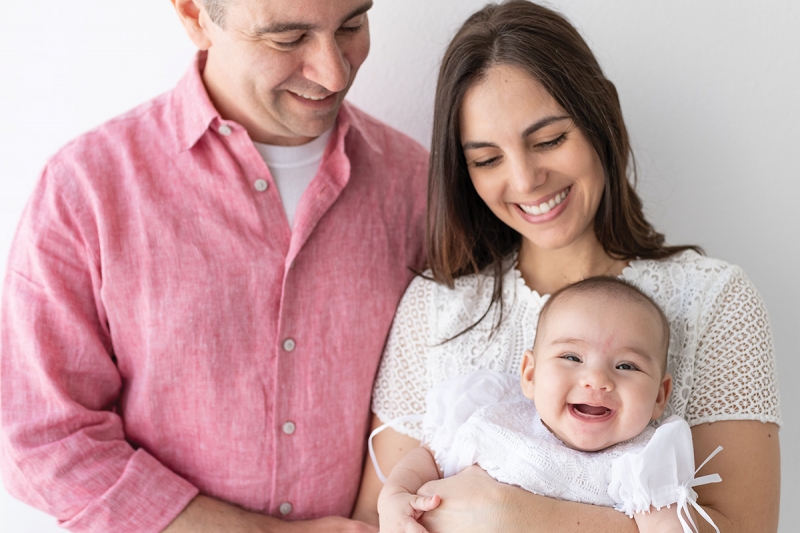
Always get an image with the mother in it. Once the baby wakes up, the session pauses so the baby can be fed. After that, if the whole family is there, Winterroth captures family portraits, posing the group on the bed with Mom holding the baby and Dad holding siblings. Sometimes a mother will resist being photographed because she’s self-conscious of extra baby weight, but Winterroth encourages her to sit for at least a few images with her newborn, as she regrets not doing that herself when she had a baby.
Promise images on a specific date and then deliver early. At end of the session, Winterroth promises image delivery within two weeks, but for the most part delivers at a week to a week and a half. Clients love to be surprised when photographs are delivered before they’re expected.
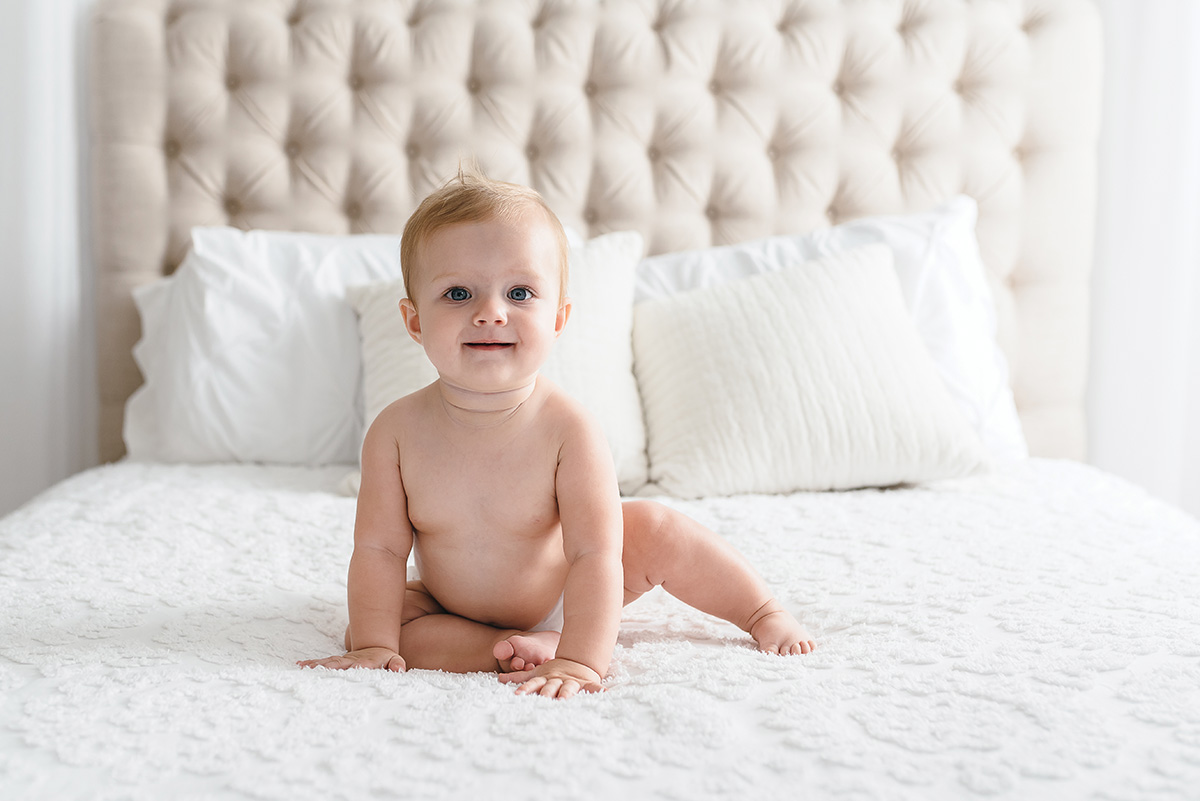
Offer the option to make their purchase online or return for an in-person session. Winterroth has experimented with both in-person and online sales, each of which has its pros and cons, she says. With in-person sales, she sometimes spent time in meetings that could be better spent in sessions. With online sales, she sometimes spent too much time emailing back and forth with a client about things that could be resolved in 30 minutes in person. Recently, the ShootProof software she uses has become more user-friendly, she says, making the online sales process more intuitive for clients. So it’s a good option for those who don’t want to leave home while they have a newborn. She also offers the option for clients to come to the studio if they’d prefer a face-to-face meeting.
Either way, clients typically purchase her first package, she says, which she’s priced high enough to cover her financial needs, including profit. Her approach is to include digital files and prints at a price that supports her business. When a client makes their purchases online rather than in person, she’s able to add a session for another client, which increases her overall profit.
It’s that good business sense—that basic respect for the numbers—that’s made Winterroth’s photography studio a success from the start. “You just don’t start something and do it halfway,” she learned from her entrepreneurial family. From the outset, “I figured out what I needed to make to be sustainable,” she says. And she’s doing great.
RELATED: A gallery of Alison Winterroth's images
Amanda Arnold is the associate editor of Professional Photographer.


.jpg) View Gallery
View Gallery
